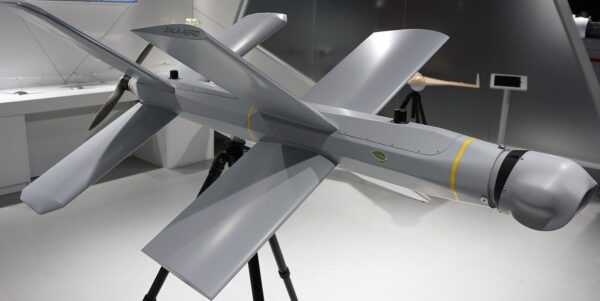Russia’s Lancet UAVs ‘Wreak Havoc’ On Ukrainian Military
Over the past day, the Russian Armed Forces said they destroyed four S-300 launchers in the Kherson region and a Gepard self-propelled anti-aircraft gun of the Armed Forces of Ukraine with the help of Lancet loitering ammunition.
During the strikes, 14 servicemen of the Armed Forces of Ukraine were killed, and ten were injured, a representative of the region’s emergency services told reporters.
Yesterday, four S-300 launchers and a Gepard self-propelled anti-aircraft gun were destroyed near the city of Kherson by strikes from Lancet unmanned loitering ammunition, 14 servicemen of the Armed Forces of Ukraine died, ten were injured,” he said.
Not just that, according to video evidence that surfaced on social media on April 26, the Lancet suicide drone also hit a Ukrainian 9A330 TLAR of the Tor air defense system. The Twitter account ‘Ukraine Weapons Tracker’ published a video of the attack and noted that it was the first confirmed loss of this air defense system.
Russia has extensively deployed its Lancet drones alongside the Shahed-136 acquired by Iran to carry out ground-based kamikaze strikes on high-value targets inside Ukraine. According to recent assertions made by Ukrainian officials, Russia first sends the Shahed drones near Ukrainian Surface-to-Air missiles (SAM) as bait to gauge their exact location.Once the location of the enemy SAMs is established, the Lancet loitering munitions are sent to obliterate the target.
However, the news about the destruction of S-300 air defense systems in Kherson also caught the attention of military experts who believe that Kyiv’s armed forces may have tweaked their strategy a little bit, which brought the long-range air defense system closer to the frontlines.
Indian Air Force Veteran and an avid Russia watcher, Squadron Leader Vijainder K Thakur, said – “It appears that Ukraine is moving its long-range AD systems close to the battlefront, most likely to thwart painful blows glide bomb attacks on military hardware & troops gathering for an offensive.”
He added, “Military prudence would have dictated that the S-300 launchers be deployed out of the Russian Lancet-3 kamikaze drone’s range of 40 kilometers. The fact that the Lancet-3 was still able to strike suggests a longer range.”
However, the report published in TASS did not mention which variant of the Lancet kamikaze drone was deployed to carry out these attacks. Thakur further added that the drone deployed by Russia could be an upgraded Lancet-3 variant known as the Izdeliye-51.
Last week, the Lancet-3 also struck a Ukrainian patrol boat on the Dnieper River, with Russian observers claiming that Ukraine was planning a landing across the river which was thwarted by the drone attack. On its part, Russia takes great pride in the capability of its Lancet drones that continue to wreak havoc on Ukrainian positions before an impending counteroffensive.
Russia’s Lethal Lancets!
The Russian Lancet-3 is a lightweight loitering munition with a three-kilogram warhead and a 40-minute endurance. It is a progression of the flying-wing KYB Kub (Cube) loitering munition, which underwent military testing in Syria in 2019.With a launch weight of 12 kilograms and a rail-mounted catapult device, the Lancet-3 can attack targets up to 40 kilometers away.




